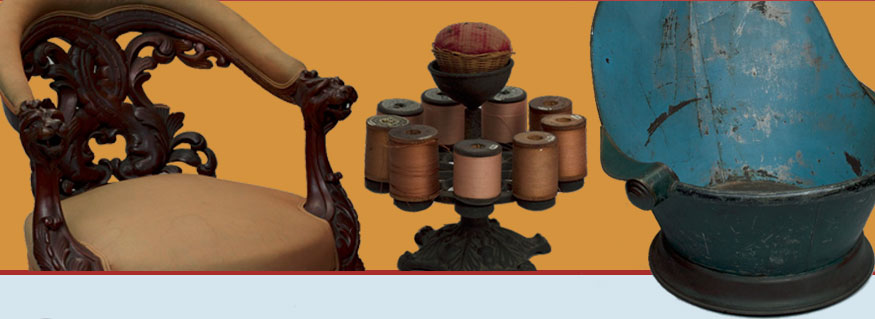
Clara Barton was an early resident of Glen Echo, MD. The town was founded in 1891 by brothers Edwin and Edward Baltzley who offered Barton land and a home in their community. They hoped the American Red Cross and Clara Barton’s fame would bring attention and additional investors to their new development.
A centerpiece of the development included a National Chautauqua Assembly, a center for arts, education, religion, and recreation. The cultural offerings of the Chautauqua intrigued Barton. She also wanted to live in a rural area and in a building suitable for her organization. The building the Baltzleys’ built was her home and the American Red Cross headquarters and warehouse from 1897 - 1904. The structure reflects her personality, work style, and the needs of the American Red Cross organization. Barton lived there for the rest of her life.
Home Furnishings
Over a third of the furnishings at Clara Barton NHS belonged to Miss Barton. Dr. Hubbell inherited the house in 1912, but temporarily lost it to Mabelle Rawson Hirons who sold many of Barton’s belongings. Later, Hubbell regained the house. Upon inheriting the house in 1929 from Hubbell, his nieces Rena Hubbell and Lena Hubbell Chamberlain turned it into a boarding house. In 1942, they sold it to Mrs. Josephine Franks Noyes. She and her sisters located some of the furnishings previously sold by the Hirons. They worked to establish the home as a memorial, and helped form the Friends of Clara Barton, Inc. The Friends bought the home from the remaining Franks sisters in 1963.
Personal Belongings and Dinnerware
Clara Barton’s personal belongings and furnishings reflect a Victorian esthetic. Dinnerware, such as the Cabin John (CLBA 454-456) service is thought to have belonged to Miss Barton and were used for formal meals and for special occasions. The house also has authentic historic pieces from the 1890s and the early 1900s, similar to what Clara Barton would have used in her home.
Historic Photographs and Correspondence
As president of the American Red Cross, Miss Barton generated a lot of correspondence. She also wrote to her many friends and acquaintances, nurturing relationships that were formed through childhood, through the Civil War, and her work with the suffrage movement. Miss Barton also oversaw a large household, as seen in historic photographs, and met with many visitors.
|


